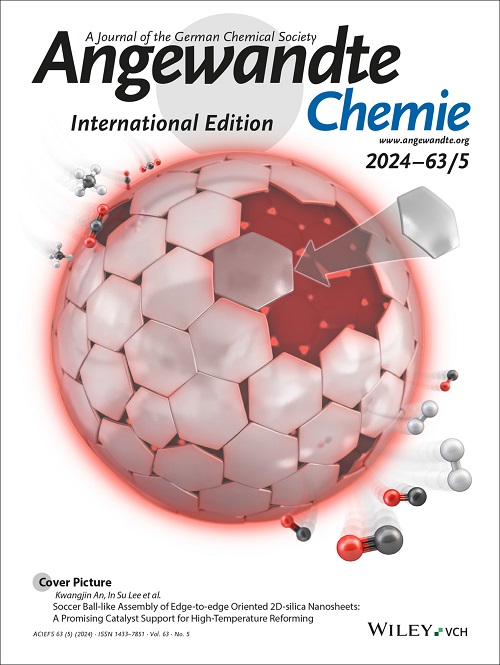Unveiling the Influence of Dehydrofluorination of Poly(vinylidene fluoride) Binder on the Failure of Graphite Anode in Potassium‐ion Batteries
IF 16.1
1区 化学
Q1 CHEMISTRY, MULTIDISCIPLINARY
引用次数: 0
Abstract
The poly(vinylidene fluoride) (PVDF) binder has been successfully employed in lithium‐ion batteries (LIBs), but it unexpectedly exhibits detrimental effects on the anode performance in potassium‐ion batteries (PIBs). The PVDF‐based graphite electrode shows a low Coulombic efficiency and even fails to maintain the electrode integrity after several cycles in the 0.8 M KPF6 ethylene carbonate/diethyl carbonate electrolyte. In this study, we unveil that the dehydrofluorination reaction of PVDF initiated by potassium ethoxide may be the key factor causing the above issues. The dehydrofluorination not only disables the binder but also releases detrimental ethanol into the electrolyte. The released ethanol can dissolve the organic components of solid electrolyte interphase (SEI) and deplete the potassium resource, thereby resulting in a reduction of Coulombic efficiency and a more severe accumulation of SEI. The crowding of more accumulated SEI coupled with the large volume expansion of intercalated graphite results in the failure of PVDF‐based graphite electrodes. This fundamental finding may provide a deeper insight into the failure mechanism of PVDF as a binder in PIBs, and meanwhile, give valuable guidance for the use of PVDF in battery communities containing sodium‐ion batteries and LIBs.求助全文
约1分钟内获得全文
求助全文
来源期刊
CiteScore
26.60
自引率
6.60%
发文量
3549
审稿时长
1.5 months
期刊介绍:
Angewandte Chemie, a journal of the German Chemical Society (GDCh), maintains a leading position among scholarly journals in general chemistry with an impressive Impact Factor of 16.6 (2022 Journal Citation Reports, Clarivate, 2023). Published weekly in a reader-friendly format, it features new articles almost every day. Established in 1887, Angewandte Chemie is a prominent chemistry journal, offering a dynamic blend of Review-type articles, Highlights, Communications, and Research Articles on a weekly basis, making it unique in the field.

 求助内容:
求助内容: 应助结果提醒方式:
应助结果提醒方式:


